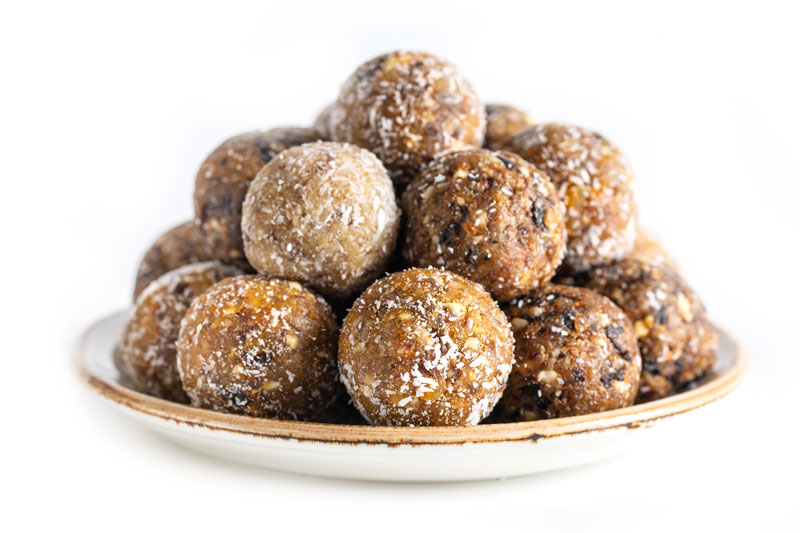How Can I Improve My Child’s Diet In A Way They’ll Love?
There’s no escaping the fact that the children of Britain are getting fatter, and when combined with a sedentary lifestyle with little physical exercise, this spells disaster for their future health. Children’s waistlines are expanding, with government statistics published at the start of 2021 revealing that nearly 10% of 4-5 year olds are now obese, with a further 13.1% overweight. At age 10-11 this increases to a whopping 21% of children in the ‘obese’ category, with an additional 14.1% classed as overweight.[1] It’s clear British kids need improved diets.
Public Health England suggests we feed children according to the Eatwell Guide, which recommends at least 5 portions of fruit and vegetables per day, as well as some potatoes, bread, rice, pasta or other starchy carbohydrates, some nuts and pulses, a small amount of dairy, and very limited oils and fats.[2] It also recommends we strictly limit junk food (which often contains staggeringly unhealthy trans fats) as well as sauces and fizzy drinks (which can contain massive amounts of sugar).
But what else can we do to ensure our kids develop healthy eating attitudes, a passion for good food and healthy, active bodies? Let’s have a closer look….

It’s so simple – yet this is where so many of us become unstuck! The more refined and processed a food is, the fewer nutrients it tends to have. It’s especially important for children to have a wide range of beneficial nutrients as they grow, but so many of the foods aimed at them by marketers are stuffed with empty calories, without any real nutrition. Many people use psychology to encourage their kids to eat proper food – for instance, even giving healthy things a ‘cool’ name can significantly increase the frequency they’re chosen by kids over unhealthy things.[3] Putting a picture of a popular kids’ TV character on a piece of broccoli made kids choose it over chocolate more often.[4] And raw vegetables were chosen by kids with far more regularity when they were cut into star shapes.[5] They were even more likely to choose them if there was some nut butter to dip them into![6]
Eating a wide range of different healthy foods is a fantastic way to increase the beneficial bacteria in your child’s gut microbiome, which will give them a huge health boost and enable their bodies to reach peak condition. UK towns are increasingly full of shops offering ingredients popular in immigrant communities, and Pakistani, Polish and Korean shops, to name just a few, have become commonplace on our high streets. It’s fun to investigate new fruit and vegetables together with your kids, using the internet as a resource to give you recipes and ideas. There are plenty of Youtube channels that are fun and informative, such as the Weird Fruit Explorer, and CBeebies’ My World Kitchen is another fantastic resource.
Teaming up with your kids to grow fruit and vegetables is a splendid way to stimulate an interest in healthy food, but not everybody has a garden, so sprouting is a fantastic alternative – and it offers some absolutely outstanding nutrition to feed and strengthen children’s growing bodies. They’ll certainly be more likely to eat something they’ve grown themselves, and sprouting is fun, and could inspire them to take more of an interest in eventually growing their own food more seriously. When you sprout grains, pulses, nuts and seeds, their antioxidant content shoots up, sometimes up to twenty times their previous level (in the case of amaranth). Eating sprouts is excellent for your heart, your digestion and your blood sugar, and sprouts have superb cancer-preventing properties too.
When we give children junk ‘treats’ full of refined sugar and saturated fat, we’re opening up a whole bag of worms in terms of their future health. We may think that clogged arteries is a condition of the elderly, but a report in the American Journal of Cardiology in 1998 lambasted paediatricians who frowned on low-fat diets for children, and confirmed that the process of arteries getting obstructed by fat deposits actually begins in early childhood when kids are given bad food.[7]
There are loads of lip-smacking treats you can give kids which will boost their health instead of damaging it. Nuts, for instance, are crunchy, tasty, natural treats which are full of protein, essential for growing bodies. They’re often high in iron, which helps the blood move oxygen all around the body, and they have superb cholesterol-reducing properties. Overall, they’re massively beneficial to our health. Other excellent treats for kids include a good, natural energy ball, some lovely, crunchy whole freeze-dried strawberries or a delicious seed mix. There are more ideas for healthier snack swaps here.
Make healthy versions of unhealthy food
It pays to be canny in the kitchen when coping with children’s dietary demands. The average chicken nugget bought on the high street is a catastrophe for kids’ arteries, hearts, energy levels, mood and waistlines. If your kids ask for nuggets, why not try making this easy and far healthier version? If they’re hankering after burgers and chips, try them with these health-packed amaranth burgers with harissa sweet potato wedges. They’re after ice cream? Why not make this delicious strawberry cashew version, or some delicious, natural dairy-free mocha fudge ice cream?
Smoothies are a wonderful way to get much-needed nutrients into your kids’ bodies. You can whizz up virtually anything you like, from nuts and seeds to dried fruit and even oats. Adding some ground flaxseed will make it thicker, like a milkshake, slowing its passage through their digestive system and leaving them feeling fuller for longer. You can also add a spoon of superfoods for a powerful nutrition boost. And if you’re worried about the effect of fruit sugars on their teeth, you can give them an environmentally-friendly reusable straw to drink it with.
Start improving your child's diet now!
We have a gigantic range of whole foods, nutrition-packed store cupboard ingredients, healthy snacks and loads of other wonderful things hugely beneficial to kids’ (and adults’) health here – and if you want to up your game in the kitchen and have a range of healthy recipes at your fingertips which will give your kids health, happiness and full bellies, come and have a look at our massive recipe section here!
[1]https://commonslibrary.parliament.uk/research-briefings/sn03336/
[2]https://assets.publishing.service.gov.uk/government/uploads/system/uploads/attachment_data/file/528193/Eatwell_guide_colour.pdf
[3]https://www.eurekalert.org/news-releases/470114
[4]https://daddytypes.com/2010/04/22/the_elmobroccoli_study.php
[5]https://pubmed.ncbi.nlm.nih.gov/22796947/
[6]https://pubmed.ncbi.nlm.nih.gov/21515118/
[7]https://www.meta.org/papers/low-fat-diets-for-children-practicality-and/9860381









